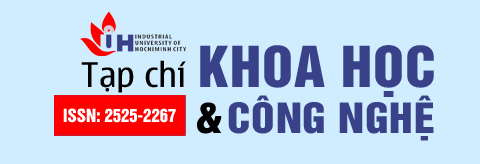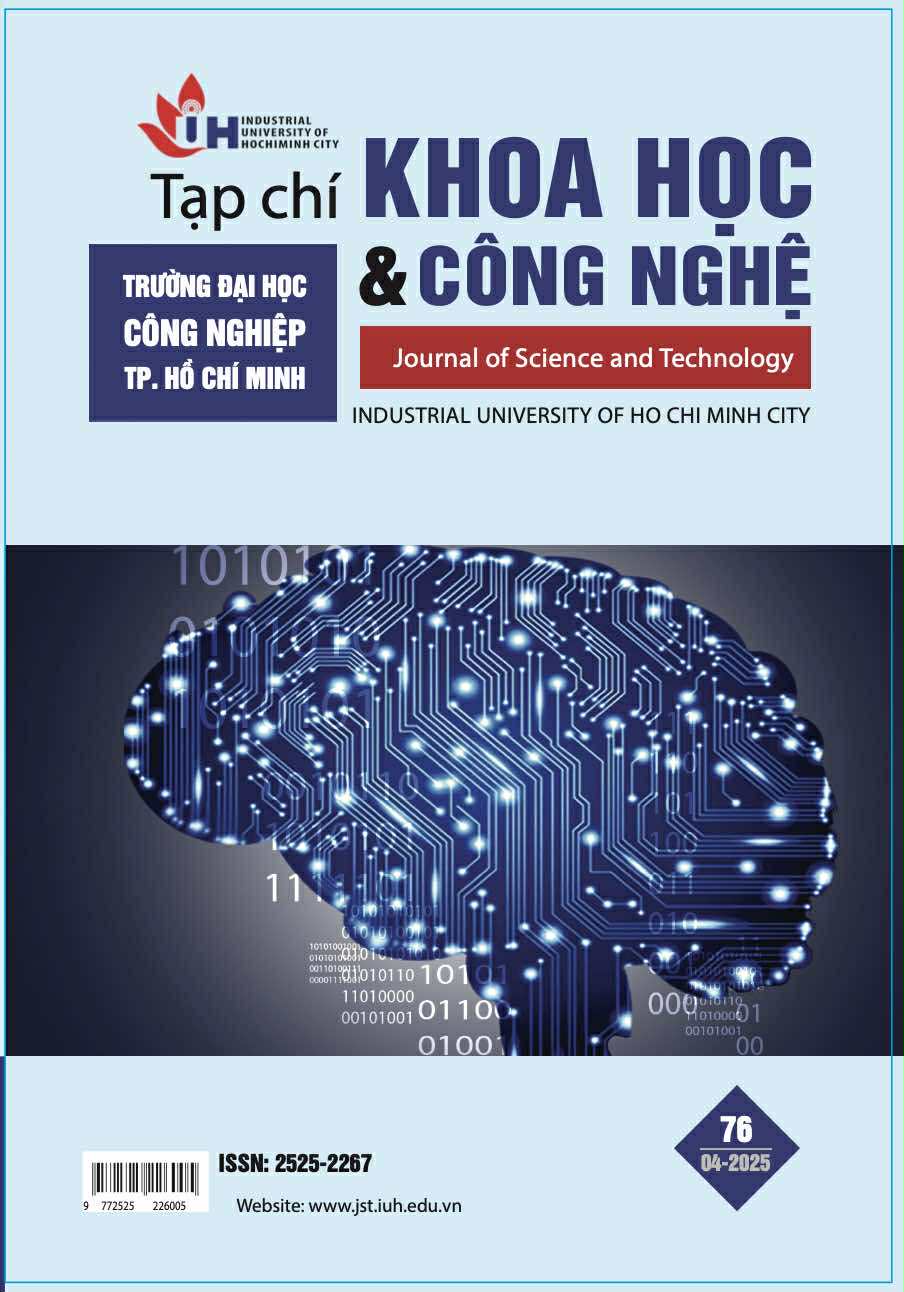STUDY ON APPLICATION OF MATERIAL FROM ELONGATE COCKLE SHELLS IN HEAVY METALS TREATMENT IN SINGLE AND MULTI-COMPONENT SOLUTIONS
Main Article Content
Abstract
In this study, by grinding and soaking in phosphoric acid solution, a powdered material from elongate cockle (Cardioidea family) was prepared, capable of treating heavy metals in single and multi-component solutions. By XRD, FTIR, SEM, and EDX analysis methods, the structural characteristics of the materials before and after activation were identified. In addition to the main component of CaCO3 in the form of aragonite and calcite, activated material also contained Ca(H2PO4)2, which partially changed the properties and durability of the material in an acidic environment. Under the conditions of 0.1 g of material, pH 4, and 30 min, Pb(II) and Fe(III) ions were well removed from individual solutions (over 97% with concentrations not exceeding 500 mg/L for Pb(II) and over 88% for solutions with concentrations not exceeding 400 mg/L for Fe(III)), but Cr(VI) was not adsorbed. The Freundlich isotherm model was suitable for describing Pb(II) and Fe(III) adsorption. Furthermore, the study also revealed different types of interactions that occurred when metals were adsorbed from multi-component solutions. While the interaction between Pb(II) and Fe(III) was competitive, the interaction between Fe(III) and Cr(VI) was supportive, which helped the material to adsorb and treat most of Cr(VI) from the Fe-Cr binary and even the Fe-Pb-Cr ternary solutions, although Cr(VI) was not adsorbed from the single solution. The adsorption mechanism was also proposed to explain the experimental results. The study has demonstrated the feasibility and effectiveness of the phosphoric acid activated material, from elongate cockle shells, in treating individual metals or their mixtures in the aqueous environment.

